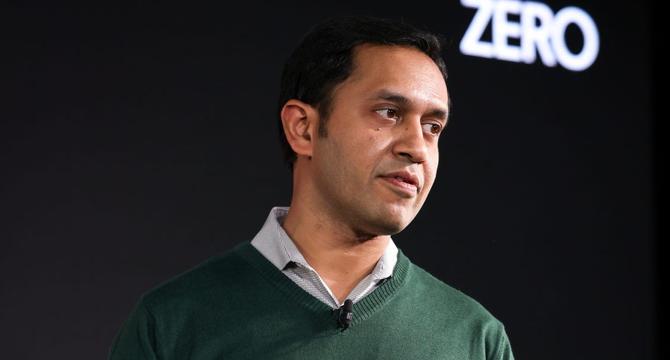Product Management News
Medium
63

Image Credit: Medium
From Signups to Subscribers: How I’m Turning Curious Users into Paying Customers
- At Raff Technologies, there was good traction with developers signing up and students exploring the dashboard, but few converted into paying customers.
- The approach was treated as an engineering problem, focusing on diagnosing, iterating, and scaling what works to convert curious users to subscribers.
- Tracking user behavior post-signup revealed that in 80% of cases, users never launched a VM, highlighting a major drop-off point in the conversion process.
- Implementing smart triggers based on behavior significantly improved open rates, click rates, and user decisions to upgrade, creating a more seamless and natural conversion process.
Read Full Article
3 Likes
Medium
331

Image Credit: Medium
Is the Lean Product Playbook the Best End-to-End Product Management Process?
- Product failure often results from not meeting customer needs better than alternatives, highlighting the importance of product-market fit.
- The Lean Product Process consists of six steps, emphasizing hypothesis testing and reducing waste by approaching layers in the right order.
- Critics of user-centered design reference Henry Ford to caution against dismissing customer feedback entirely, but acknowledge the value of feedback from the solution space.
- Different customers have varying needs and preferences, necessitating precise segmentation and understanding through methods like one-on-one interviews.
- To prioritize needs, importance vs. satisfaction framework is utilized, focusing on addressing high importance and low satisfaction areas for added customer value.
- The article stresses the importance of creating a good product that addresses important and cohesive customer needs through MVP testing and clear value proposition.
- The Kano model assists in classifying needs into must-haves, performance benefits, and delighters to guide product development and differentiation from competitors.
- The Lean approach encourages quick learning and iteration based on customer feedback to improve product-market fit, following a Hypothesize-Design-Test-Learn loop.
- Metrics play a crucial role post-launch in assessing product success, with suggestions to track key metrics in the AARRR framework like retention rates and customer lifetime value.
- Iterative development through agile methodologies, coupled with user feedback and analytics, helps companies stay competitive by adapting to market changes rapidly.
Read Full Article
19 Likes
Insider
422

Image Credit: Insider
Here's how Uber's product chief uses AI at work — and one tool he's going to use next
- Sachin Kansal, Uber's product chief, uses AI tools ChatGPT and Gemini to summarize lengthy reports and understand Uber's performance in overseas markets like South Africa, Brazil, and Korea.
- He plans to add Google's NotebookLM to his AI suite as another tool for interacting with documents and creating audio podcasts based on information.
- Kansal treats AI as a research assistant, using deep research features of large language models like ChatGPT to brainstorm with his team and generate ideas, especially for new driver features.
- Uber's CEO highlighted the importance of employees learning to work with AI, stating it will be essential at Uber, with Kansal focusing on expanding his AI toolkit with NotebookLM.
Read Full Article
25 Likes
Medium
131

Image Credit: Medium
The DAO of Building Together
- Building great teams requires creating space for trust, patience, and collaboration, rather than celebrating individual heroes or chasing the next big thing.
- Product teams can unintentionally create competition instead of collaboration when individuals are singled out or when focusing solely on shiny new features without addressing existing issues.
- Emptying hearts by setting aside ego and filling bellies by providing trust, time, and safety for people to do their best work can lead to stronger and more sustainable team dynamics.
- The best teams are those where leaders trust their team members to contribute their wisdom, set the direction, and allow space for individuals to innovate and excel.
Read Full Article
7 Likes
Discover more
- Programming News
- Software News
- Web Design
- Devops News
- Open Source News
- Databases
- Cloud News
- Operating Systems News
- Agile Methodology News
- Computer Engineering
- Startup News
- Cryptocurrency News
- Technology News
- Blockchain News
- Data Science News
- AR News
- Apple News
- Cyber Security News
- Leadership News
- Gaming News
- Automobiles News
Medium
95

Product Management Certifications: Smart Investment or Resume Padding?
- Product management certifications can be a smart investment if used effectively to learn essential skills like working with teams and defining MVPs.
- Certifications alone are not a guarantee for a product management career; one needs to think and act like a product manager, solving real problems and displaying leadership skills.
- Some certification programs offer valuable hands-on projects, mentorship, and feedback, which can be crucial for professional growth rather than just enhancing a resume.
- Ultimately, the effectiveness of a product management certification depends on how it is leveraged for learning and practical application, rather than just as a credential for resume padding.
Read Full Article
5 Likes
Medium
441

Thinking of launching a digital product but don’t know where to start?
- Solve one clear, painful problem and be laser-specific in your digital product idea.
- The name of your product matters more than the content it offers – hooks are everything.
- Add high perceived value to your digital product by including additional resources like templates and roadmaps.
- Creating digital products does not require fancy tools; the focus should be on usefulness and ease of consumption.
Read Full Article
26 Likes
Logrocket
281

Image Credit: Logrocket
Leader Spotlight: Meeting healthcare consumers where they are, with Aditya Raju
- Aditya Raju is a digital product leader specializing in healthcare and consumer products, driving digital transformations impacting millions of users.
- He emphasizes the importance of meeting users in the healthcare ecosystem through personalized digital experiences.
- Raju focuses on segmentation and AI to cater to diverse audience needs and enhance accessibility for users.
- In healthcare, personalization and safeguarding sensitive data are crucial aspects when delivering mass-market products.
- Language models and culturally relevant translations play a vital role in ensuring clear communication for diverse users.
- Healthcare organizations are leveraging technology and human expertise to simplify complex information for consumers.
- Continuous user testing, feedback loops, and data collection drive innovation and inform product strategy evolution.
- A/B testing is utilized to measure improvements in user experience, conversion rates, and engagement initiatives.
- The future of digital healthcare offerings includes hyper-personalization, predictive health, and proactive well-being solutions.
- Aditya Raju's insights shed light on the evolving landscape of digital health experiences for consumers.
Read Full Article
16 Likes
Medium
372

Image Credit: Medium
When Product Drift Is a Sign You’re Doing It Right (And When It’s Not)
- Product drift can be a signal of adaptation, stemming from various factors like customer feedback, market shifts, or internal experiments.
- Successful products often evolve from their original intent; drift can lead to unexpected success, but it can also result in confusion or inefficiency.
- Good drift signifies progress towards product/market fit, while bad drift can stem from compromises and lack of clarity.
- To manage product drift, focus on clear vision, customer outcomes, and meaningful insights, avoiding reactionary or sales-led development.
- Effective product teams celebrate learning, anchor decisions in user problems, and revisit their vision regularly to stay aligned.
- Involving customers continuously, empowering product teams to prioritize, and tracking the 'why' behind features are key strategies to manage drift.
- Product drift isn't inherently negative; it can lead to valuable discoveries and necessary adaptations in response to evolving circumstances.
- Successful companies like Slack and Instagram have leveraged product drift to pivot and find their core value, relying on data and customer feedback.
- Leaders should focus on solving the right problems rather than adhering rigidly to the original plan, embracing the evolution that product drift can bring.
- Ultimately, product drift can be a tool for growth and innovation when managed consciously and aligned with the company's overarching goals.
- Navigating product drift requires a balance of adaptation, data-driven decision-making, and continuous customer engagement to steer the product towards success.
Read Full Article
22 Likes
Medium
218

Image Credit: Medium
Network Theory and Predictive Analysis: The Case of Conclave
- Using network theory and predictive analysis in the case of the conclave, researchers from Bocconi University accurately predicted the outcome of the papal conclave by examining relationships and patterns within digital ecosystems.
- Network theory allows for the visualization of relationships and emergent patterns, identifying key influencers, hidden communities, and hierarchies of influence within a system.
- Key concepts in network theory include nodes representing entities, edges representing relationships, centrality metrics like degree and betweenness, path analysis, and community detection.
- By applying social network analysis to the College of Cardinals, researchers mapped human relationships, alliances, and power dynamics to predict conclave outcomes.
- The study utilized various sources including episcopal consecration lines, informal relationships, and coalition-building metrics to understand networks of influence.
- Network analysis has applications in legislative analysis, electoral campaigns, talent management, supply chain management, activism strategy, and impact analysis across various domains.
- Challenges like privacy issues, bias concerns, and the evolving nature of networks are addressed through ethical frameworks and advanced analytical approaches.
- Technological trends like relational big data and relational artificial intelligence are shaping the future of network analysis, enabling more sophisticated insights and predictions.
- The success of predictive network analysis in the papal conclave case underscores the universal applicability and predictive power of network theory in diverse contexts.
- Network theory emphasizes the relational nature of social reality, showcasing how human decisions and outcomes are influenced by interconnected relationships.
- Understanding and navigating relational networks will be crucial in the connected future, offering advantages in comprehending and influencing complex systems.
Read Full Article
13 Likes
Medium
413

Image Credit: Medium
Our AI Experiment Hit 60,000 Views But Only 27 People Cared — Here’s Why That’s Actually Perfect
- The AI experiment involving an AI persona named Mei Lin reached 60,000 views but only gained 27 long-term followers.
- Initially, Mei's engagement was declining, prompting a shift in strategy to make her more dramatic and engaging.
- Various experiments were conducted, including a K-Drama transformation, random community replies, and trend commentary.
- The 27 committed followers represent a new form of digital relationship with AI personas.
- The success of AI personas lies in genuine engagement and collaboration rather than believability.
- While personality shifts drove engagement, building genuine followership requires consistent value.
- Authentic interaction patterns trump artificial origins in building relationships with AI personas.
- The focus should be on creating helpful and entertaining AI personas that collaborate with users.
- Design for personality evolution anchored in consistent value to attract and retain followers.
- The future of AI personas lies in enabling user-generated experiences and amplifying human creativity rather than deception.
Read Full Article
24 Likes
Medium
177

Image Credit: Medium
10 Best Ways to Fail a Product Management Interview
- Many applicants experience radio silence after product management interviews, despite feeling positive about their performance.
- Research suggests common patterns in PM interview failures, which are avoidable with awareness.
- An article provides insights from hiring managers, interview debriefs, and personal experiences to help candidates understand potential pitfalls.
- The article outlines 10 common ways applicants fail product management interviews and offers guidance on how to prevent these mistakes.
Read Full Article
10 Likes
Medium
27
Image Credit: Medium
The Best and Worst Inventions of Agile
- Agile, born in 2001, has transformed software development over the past two decades, leading many companies to transition to this methodology.
- Transitioning from the traditional waterfall model, which often resulted in project failures, Agile has brought about notable improvements in productivity and performance.
- Research indicates that excessive overtime work can have detrimental effects on health and productivity, with Agile methodologies like XP promoting a maximum of 40 working hours per week.
- Agile and its frameworks offer numerous best practices that have proven to enhance team performance and mitigate issues like burnout.
Read Full Article
1 Like
Medium
328
Image Credit: Medium
From edge cases to emotional trust: what fraud taught me about UX
- Fraud work teaches how to anticipate breakdowns and recognize manipulative behavioral patterns.
- UX design isn't just about the happy path but also about building resilient systems that withstand misuse and adversity.
- Designers need to consider adversarial user behavior and integrate safeguards without alienating honest users.
- Creating emotionally intelligent UX involves navigating conflict, adjusting tone, and focusing on integrity for enduring user experiences.
Read Full Article
19 Likes
Dev
36

Image Credit: Dev
How Personalization Widgets Are Reshaping E-Commerce Delivery Experiences
- Personalization widgets like 'Arrives Today' or 'Get it by Tomorrow' are reshaping e-commerce delivery experiences, creating trust between customers and online stores.
- These widgets require advanced technology, cross-functional collaboration, and quick decision-making to deliver fast and accurate delivery promises, changing how people shop online.
- Key components like real-time APIs, smart caching, and flexible UI are vital for the seamless functioning of these widgets across various devices and product offerings.
- The future of e-commerce delivery experiences involves AI recommending not just the fastest, but the best delivery options, and voice technology like Alexa playing a significant role.
Read Full Article
2 Likes
Medium
304

The Roadmap Is a Lie (And Other Product Management Truths I’ve Learned the Hard Way)
- Teams often believe their projects are crucial, leading to challenges in prioritizing tasks and managing expectations.
- Dealing with emotionally charged feedback and deciphering genuine user needs without succumbing to feature creep is a common struggle in product management.
- Overcoming analysis paralysis by making decisive choices, cutting down on unnecessary meetings, and moving forward with a clear direction is key to successful product management.
- Product managers are not only responsible for steering the product roadmap but also for managing morale, facilitating communication between different departments, and adapting to sudden changes in direction.
Read Full Article
18 Likes
For uninterrupted reading, download the app